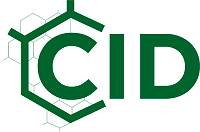The compression of multidimensional spectra allows the analysis of complex samples in a faster and more accurate way

In the era of "Big Data", the possibility of sharing, processing and storing large amounts of information is essential in all areas of human activity. Scientific research is not exempt from this technical imposition. On the other hand, spectroscopic techniques allow scientists to observe the structure of matter from small molecules to large biopolymers such as proteins or nucleic acids. These spectroscopic techniques provide information with atomic resolution of said molecular systems. One of these advanced techniques is Nuclear Magnetic Resonance, which uses the magnetic properties of the nucleus to obtain valuable information from molecular systems of different complexity, from biological to synthetic molecules. Technological advances have allowed the acquisition of these spectroscopic data to be increasingly faster and more accurate, which is generating a large amount of information that must be processed and stored for further analysis or distribution among the scientific community. Throughout this process, the necessary memory space must be optimized and saved. Unfortunately, some of these spectroscopic data present a high percentage of noise (> 90%) that does not contain useful information but occupies memory space. This is especially critical in metabolomics studies, where a huge amount of samples and, therefore, spectroscopic data have to be processed and analyzed. This causes that in many occasions the predominant component in these data is in fact the noise lacking information.
In a research carried out in collaboration between the IDAEA and the IQAC (both centers of the CSIC in Barcelona) a procedure has been developed (called VOI of the English Variables-Of-Interest) that allows to clean this spectroscopic data of the noise, maintaining the spectral resolution and therefore the information of interest. This greatly reduces the memory needed to store and process this information. In addition, the elimination of noise avoids that this has an important weight in the analysis and interpretation of the results. This research was recently published in the journal Chemical Communications (Puig-Castellví et al., Chem. Commun.2018, 54, 3090, DOI: 10.1039 / c7cc09891j) and has been selected for the internal cover of the last issue. In the words of IQAC Researcher Ignacio Alfonso "The capacity of our method is perfectly illustrated in the image we have proposed for the cover, in which a lawn mower eliminates the excess noise of a two-dimensional NMR spectrum. It is a simile of everyday life that helps to understand what the method really does at the mathematical level ". Researchers have applied VOI to different types of multidimensional NMR experiments of various complex samples, from metabolites to proteins, and even yeast extracts. The method is especially useful for metabolomics studies, as the researchers themselves highlight and demonstrate in the work.

Puig-Castellví F, Pérez Y, Piña B, Tauler R, Alfonso I. Compression of multidimensional NMR spectra allows a faster and more accurate analysis of complex samples. Chem. Commun. (Camb). 2018, 54, 3090-3093. doi: 10.1039/c7cc09891j.
By Institute for Advanced Chemistry of Catalonia (IQAC-CSIC)









